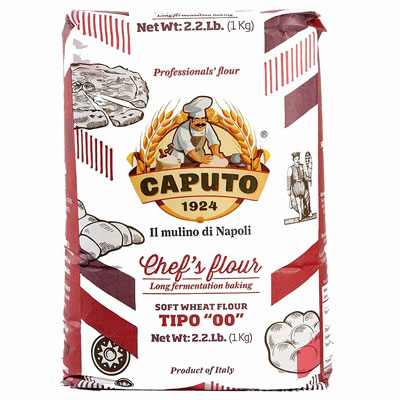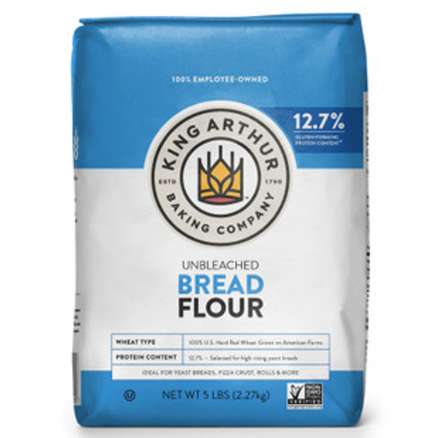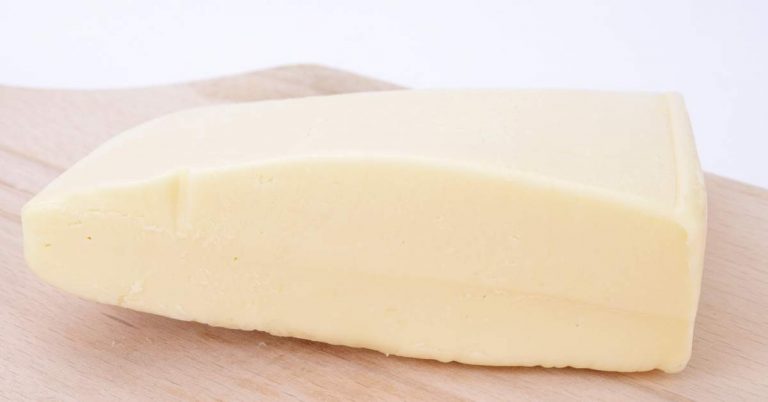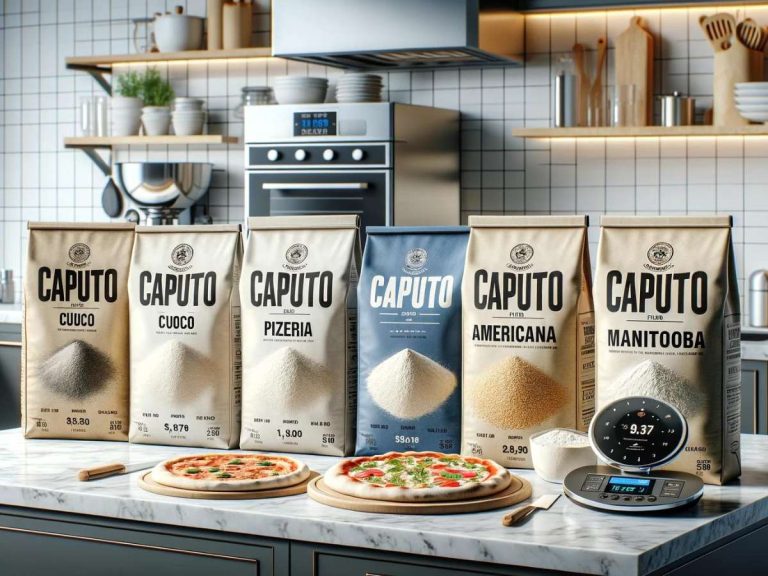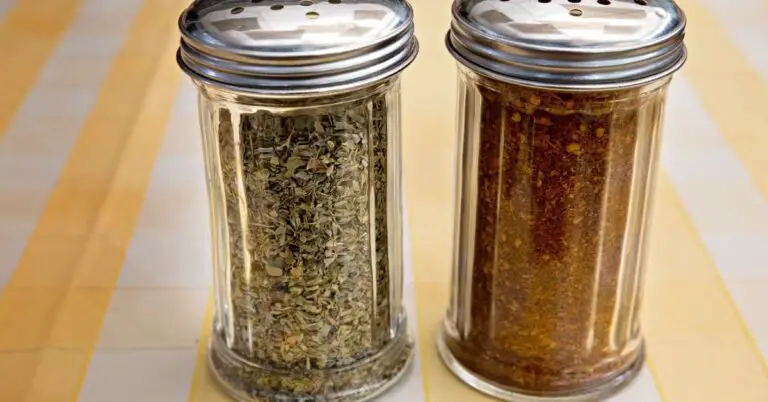What’s The Best Flour For Making Pizza? All-Purpose vs Tipo 00 vs Bread Flour
Which flour is best for making pizza? This is a great question, because flour is the most important ingredient in pizza dough. The answer is somewhat subjective, but in general the best flour for pizza will be finely milled and high in gluten and protein. This is what produces a tender yet chewy pizza crust.
More specifically, the best flour for pizza really depends on what kind of pizza you want to make. For example, bread flour is great for chewy New Haven and New York style pizza. On the other hand, Tipo 00 flour is perfect for a soft and crispy crust like Neapolitan style pizza.
Here’s a quick guide to get you started below:
| Flour Type | Ideal Pizza Style |
|---|---|
| All-Purpose | Decent for all styles, great at none. |
| Tipo 00 | Neapolitan, Neo-Neapolitan, New York |
| Bread Flour | New York, thin crust in general |
| Bread Flour/00 Mix | New York, Neo-Neapolitan, New Haven |
| Bread Flour/All-Purpose Mix | Detroit Style, General purpose pizza crust |
But if all you have access to is regular all-purpose flour, don’t worry, that will work just fine, too. It. The dough just won’t be as strong or as puffy compared to bread flour or Tipo 00.
Personally, I prefer to use Tipo 00 flour for Neapolitan style pizza, and a 50/50 mix of bread flour and 00 flour for all other styles. This produces a pizza dough that’s strong enough to withstand extended fermentation periods, yet still bakes into a delicate and airy crust.
Tip: If you don’t have access to high quality flour for your pizza, mixing whatever flour you have with bread flour is a great workaround. The extra gluten and protein in the bread flour makes up for the weakness typical of cheaper flours.
Tipo 00 Pizza Flour Is Generally The Best Flour For Pizza, Especially Neapolitan
Enough with the nuance, let’s cut right to the chase. If you can only pick one kind of flour to make pizza with, it should be Tipo 00 flour. In my opinion, Tipo 00 flour is the best flour for making pizza.
Tipo 00 flour is a unique, finely milled Italian flour, perfect for creating smooth and elastic doughs for pizza and pasta. This type of flour is sometimes called “Italian flour” or “pizza flour” depending on the branding. Tipo 00 is the only recommended flour for making Neapolitan style pizza as per the AVPN (“True Neapolitan Pizza Association”).
Tipo 00 flour is my favorite for pizza because it has enough protein and gluten for a strong pizza dough with lots of air bubbles and chewiness. In addition, tipo 00 is finely milled from soft wheat flour so that the crust has the texture and taste of an artisan pizza and not a slice of crusty bread or a baguette.
That said, not all Tipo 00 flour is created equally. In fact, many people give up on Tipo 00 flour entirely because they chose the wrong type or wrong brand.
For example, my local grocery store carries an affordable brand of 00 flour marketed as “pizza flour”. Sounds great, right? Not exactly. Unfortunately, the dough this 00 flour produces is way too weak and doesn’t hold up to longer fermentation periods or higher-hydration levels (the keys to making good homemade pizza). The reason? It doesn’t contain enough gluten or protein, and has a much lower water absorption rate.
You don’t need to worry about these details too much, just make sure to buy 00 flour from a reputable brand such as Caputo. Caputo 00 Chef’s Flour is my personal favorite because it’s designed for high hydration levels and long fermentation times–perfect for making pizza.
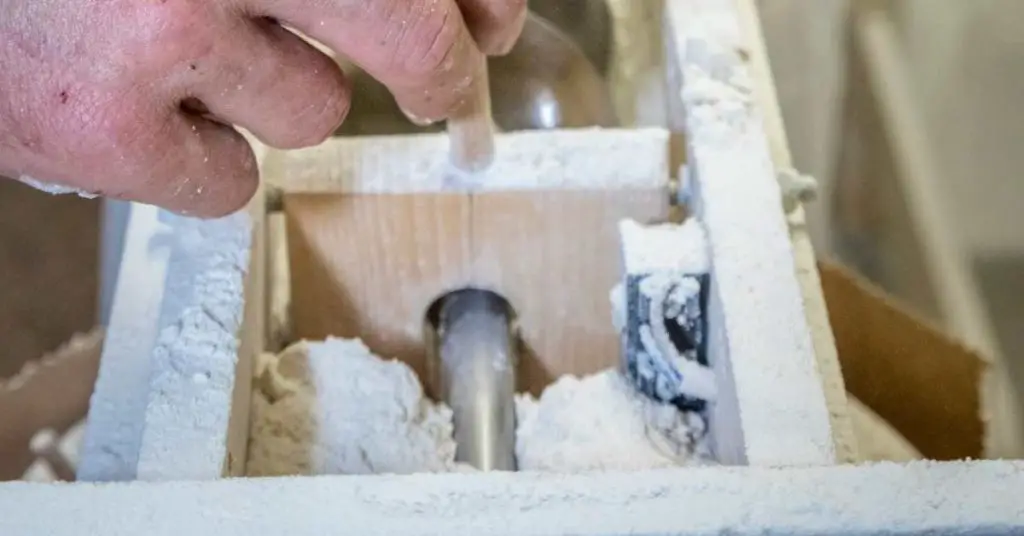
Tipo 00 Flour Is Not The Same As Pastry Flour
Some people believe that Tipo 00 flour is the same as pastry flour, but this isn’t true. Pastry flour is finely milled like 00, but it’s too weak for pizza crust.
Pastry flour might work in a pinch, especially if you combine it with bread flour, but your dough will be weak and your crust will bake flat and dense. This is pretty much the opposite of what you want in a pizza crust.
Related Article: Why 00 Flour is Best for Pizza
Bread Flour Is Best For New York & New Haven Style Pizza
Not all pizza styles have the same kind of crust. For example, Neapolitan style crust is puffy and delicate, while New York and New Haven style crust is thin and chewy. This mostly has to do with the type of flour used in the recipe.
Bread flour (or strong flour) is a type of flour made from hard wheat that contains more gluten than other types. Gluten is what gives the dough strength and elasticity, which results in a chewier crust. This is why bread flour is the top choice for pizza chefs flour type for making New York and New Haven style pizza, especially if you let the dough ferment overnight.
However, you can also combine bread flour with 00 flour for the best of both worlds. This mixture of bread and 00 flour produces a pizza crust that’s chewy on the outside yet still soft and delicate on the inside. This mixture also works great for Detroit and other similar pan pizza styles as well.
In general, if you don’t have access to good quality Tipo 00 flour, opt for bread flour instead. Bread flour is perfect for making pizza at home because it cooks well in a home oven and it’s available at most stores. To avoid a bready tasting crust, I recommend cold-fermenting dough made with bread flour for 24-48 hours to soften up the grains.
All-Purpose Flour Is Good For Most Pizza Styles, But Not Great At Any Of Them
All-purpose flour is pretty good for pizza dough, but it isn’t great. You’ll get a crust with decent air bubbles and texture, but flatter and denser than Tipo 00 or bread flour.
That said, all-purpose flour (or “plain flour”) produces a more delicate crust compared to bread flour, but still coarser than all-purpose flour.
For these reasons, all-purpose flour is considered the “Jack of all trades” when it comes to pizza dough. It’s good for all styles of pizza, but not amazing for any of then.
Many people claim that all-purpose flour has too little protein content for a pizza dough but this isn’t true. All-purpose flour typically has a protein content between 9-11% which is more than enough to make great pizza dough. Is it the best flour to use? No, but it still works fine.
When using all-purpose flour, it’s important to use a good brand, like King Arthur, if possible. If you’re just using a store brand no-name all-purpose flour, your results will vary. If you don’t have a choice, stick with a lower hydration recipe to make up for any weaknesses in the dough.
Keep in mind, if you’re using a pizza oven, you can get away with using cheaper flour. Because a pizza oven cooks pizza so quickly, you tend to get great oven-spring and browning anyways, especially in a wood-fired pizza oven.
Flour For Making Pizza Compared
| Flour Type | Protein Content | Qualities and Characteristics |
|---|---|---|
| Tipo 00 Flour | 13% | Finest grade of flour milled in Italy, with a highly refined consistency. Produces a soft crust with a crackly-thin layer of crispness, an open and airy hole structure, and a slight chewiness. Requires less water compared to American flours due to its fine milling. |
| All-Purpose Flour | 10% | Moderate protein content suitable for a wide range of baked goods. Produces a pizza crust with smaller bubbles, resulting in a less airy structure compared to “00” flour. Versatile but isn’t amazing at any specific kind of pizza.. |
| Bread Flour | 12.7% | Similar protein content to Caputo bread flour. Produces a stretchier, chewier crust compared to Italian “00” flour. Results in a taller cornicione (edge of the pizza crust) and offers better protection against sagging from sauce and cheese. Great for New York style. |
Next Time You Make Pizza Dough, Ferment It
Another factor that comes into play when determining how well a pizza will turn out is the fermentation time. I personally like to ferment my doughs for at least 24 but preferably 48 hours. This allows for the airiest and puffiest crust possible. It also makes the crust easier to digest, similar to the way sourdough works.
Fermentation is standard when making Neapolitan pizza dough, but it’s equally beneficial for any style of pizza. This fermentation improves the flavor and texture of the crust and helps to soften harder grains of bread and wheat flour.
To ferment your pizza dough, just leave it in a covered container overnight (or longer) in the refrigeration. Just make sure the dough gets a chance to proof back to room temperature before using it.
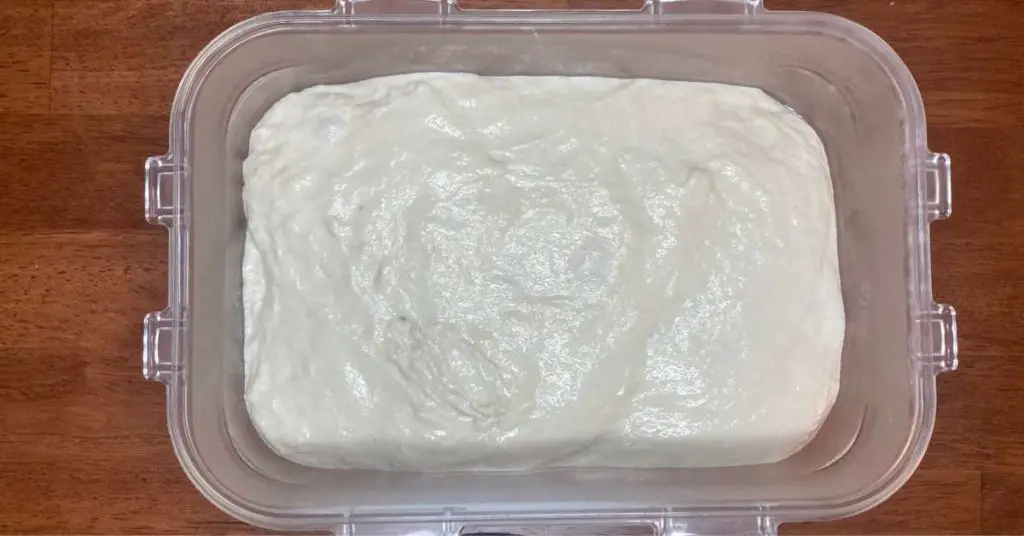
Use Semolina Flour To Prevent Sticking
When you’re preparing pizza dough, you need to coat your hands with flour to prevent sticking. But before you reach for the same flour you used to make the dough, try semolina flour.
Semolina flour is typically used in pizza making to prevent sticking (also known as “bench flour”) for several reasons:
- Non-Stick Properties: Semolina’s coarser and granular texture makes it an excellent non-stick agent. When used as bench flour, it prevents dough from adhering to the work surface or to baking equipment, such as rolling pins and dough scrapers.
- Less Absorption into Dough: Unlike finer flours, semolina does not easily get absorbed into the dough. This helps in maintaining the dough’s intended hydration level and consistency during the kneading and shaping processes.
- Minimizes Dough Alteration: Since semolina is less likely to be absorbed by the dough, it minimizes the risk of altering the dough’s texture. This is particularly important for doughs that have a specific moisture content for optimal results.
- Suitable for Wet or Sticky Doughs: For doughs that are particularly wet or sticky, semolina flour can be a better choice than regular flour because it provides an effective barrier without needing to add too much additional flour, which could dry out or toughen the dough.
That said, you can actually use semolina flour within the pizza dough recipe itself to add strength and gluten for any type of pizza, but if you’re using a good quality pizza flour it shouldn’t be necessary.
If you need a good quality bench flour, you can find Caputo Semolina flour (what I use) right on Amazon.
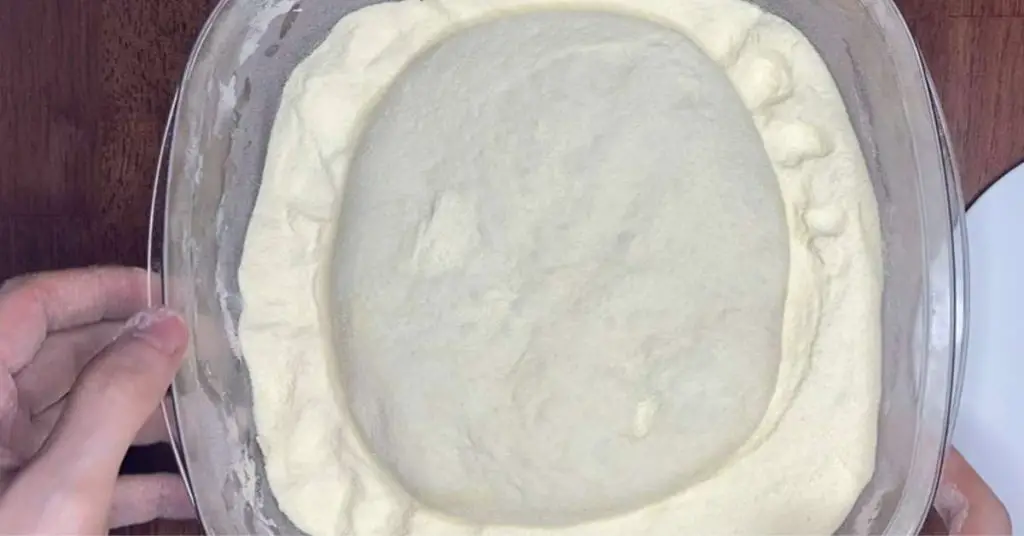
Related Post: How to stretch pizza dough without sticking
How Water Absorption Affects Your Choice of Pizza Flour
When picking flour for pizza, it’s also important to consider how well it absorbs water. Different flours soak up water differently, which changes the dough’s texture and ease of handling.
Flours like Tipo 00 and bread flour are high-protein and can absorb lots of water while still maintain their gluten structure. This is partly due to their high “W ratings,” a measure of flour’s ability to absorb water and develop gluten. A higher W rating means the flour can take in more water, making the dough easier to shape and resulting in a chewy crust.
Lower protein flours, such as all-purpose flour, have lower W ratings. They can’t absorb as much water and get too sticky when wet. This makes the dough tough to work with and can lead to a harder crust.
So, for a dough that’s easy to handle and yields a chewy, light crust, choose a high-protein flour with a high W rating, like “00” flour. It’s a great choice, especially for beginners in pizza making, as it helps create a smoother dough and a better end product.
To see how this concept applies to common flours, check out the table below:
| Flour Type | W Rating | Water Absorption |
|---|---|---|
| 00 Flour | W250 to W300 | High |
| All-Purpose Flour | Lower than 00 and bread flour | Medium |
| Bread Flour | Higher than 00 flour, but less than 370 | High |
| Pastry Flour | Lower than all-purpose flour | Low |
| Semolina Flour | High in gluten, similar to bread flour | High |
W Rating of Various 00 Flours
While the concept of water absorption applies to any kind of flour, the “w rating” is typically only listed on Italian 00 flours. The chart below will give you an idea of the range of protein levels and water absorption for popular Tipo 00 flours.
| Brand/Variety of 00 Flour | W Rating | Protein Content | Ideal Usage |
|---|---|---|---|
| Antimo Caputo Chef’s Flour (Caputo Red) | W300-320 | 13% | Ideal for longer fermentation, strong gluten development |
| Caputo Pizzeria (Caputo Blue) | W260-270 | 12% | Best for wood-fired ovens, suitable for 8-24 hour rise |
| King Arthur ’00’ Pizza Flour | W220-260 | 10% | Fine texture, good for tender crusts |
| Polselli Vivace Tipo “00” Flour | W290 | 13% | Balanced between chewiness and tenderness |
| Molino Grassi USDA Organic Tipo 00 Flour | W220-260 | 11.5% | Organic, suitable for a range of baking needs |
| Polselli Voila Tipo Type 00 Flour | W240-260 | 12.5% | Good for chewy and tender crusts |
| Caputo Classica | W220-260 | 11.5% | General-purpose 00 flour |
Malted Flour Helps With Browning And Yeast Development
Many pizza makers like to include malted flour in their dough recipes. While you wouldn’t want to use it for pizza dough by itself, it has lots of benefits when mixed in with different types of flour.
Malt flour is made from barley grains that are sprouted, dried, and ground. This process creates enzymes, like amylase, which are great for baking. Amylase breaks down starches into sugars, and these sugars are what yeast needs to work well. This is especially important when you’re making pizza dough, because it helps the dough rise better and gives it a good flavor.
In some store-bought flour mixes, malt flour is already added in small amounts. It’s there to help the dough rise nicely and to make the crust taste better and look golden brown. If your flour doesn’t have malt flour in it, you can add it yourself in place of honey or sugar for the same effect.
There are two kinds of malt flour: diastatic and non-diastatic. Diastatic malt flour has active enzymes that keep working in the dough, helping the yeast do its job. Non-diastatic malt flour doesn’t have these active enzymes and is used more for adding flavor and color.
So, malt flour is a handy ingredient for pizza dough. It helps your dough rise well, makes it taste better, and gives your pizza crust a nice color.
That said, if you have a pizza oven, malted flour (or honey and sugar) aren’t necessary because the high heat of the oven caramelizes the flour in a way not possible in a regular home oven.
Does Walmart/Amazon Carry 00 Flour?
Believe it or not 00 flour is available at most major supermarket chains.
In fact, even Walmart regularly keeps pizza flour in stock depending on your area. Just be aware that whatever is available there is most likely not going to be high-quality pizza flour.
Tipo 00 flour is also available on Amazon, which you can check out here.
Choose The Best Pizza Flour For You
So, in essence my message to all you wanna-be home pizza-makers out there is simple. Just use your best judgment when it comes to choosing flour. If you have a Tipo 00 flour available to you, you should use it.
But if you don’t have Tipo 00, don’t hesitate to reach for bread flour or all-purpose flour to use for pizza in your local grocery aisle. Your pizza will be heavier but still very tasty. In fact, any kind of high gluten flour will do the trick.
I generally find that the thinner the crust, the less taste matters, especially when the crust is extremely thin and crispy. I sometimes add flax or whole wheat flour to my thin crusts because there’s simply less crust to taste. But I’d never do this with a Neapolitan pizza where the whole point is to relish the soft puffy crust.
Additionally, check out this useful explanation of how to figure out exactly what percentage of protein is in your flour.

